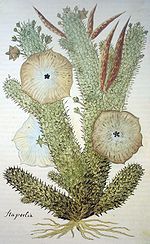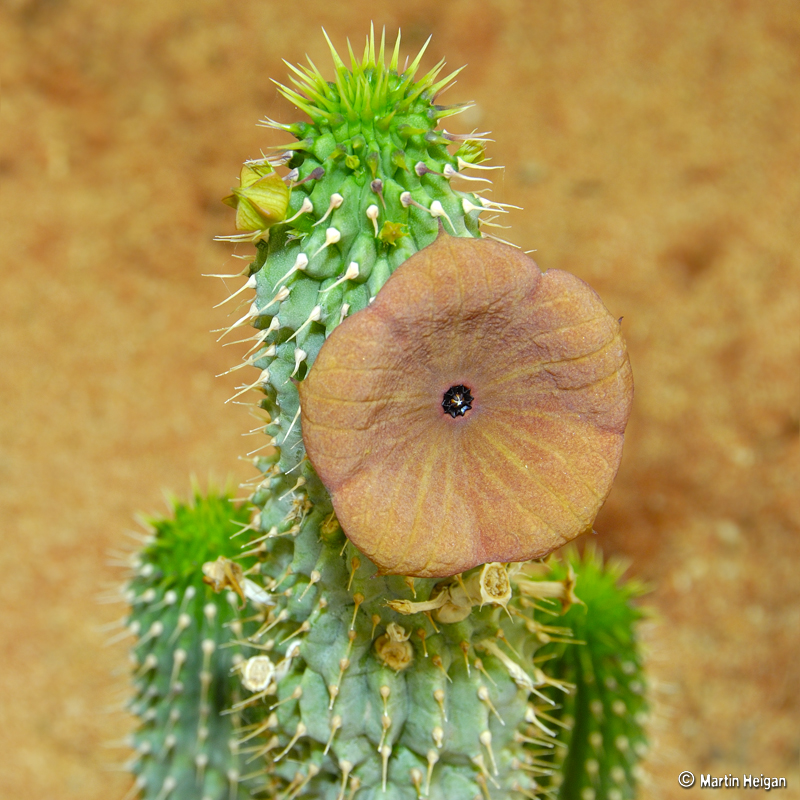Adaptations
Hoodia gordonii is a succulent plant (also referred to as succulents or fat plants). This means it is a water-retaining plant. This is an adaptation that is crucial for living in desert environments because there is so little water available. Whenever there is water available, it is important for these plants to be able to store is. Another way Hoodia gordonii saves water is through CAM photosynthesis (got to the Nutrition page to read more about CAM plants).
This plant grows pretty slowly and does not grow very far from the
ground. Adults average to about 60cm (about 23 inches) in length
and the stems get about 40cm (about 16in) in width. Since these
plants grow in very hot and dry conditions, being tall is not
ideal. The father they can get from sun, the better. Since they
sometimes seek protection from other plants in the area, it does
not hurt to be smaller.
Structures of the plant:
Spines:
Hoodia gordonii is covered in spines that grow along the length
of the plant. This is an adaptation for protection.
This plant grows pretty slow and does not grow very far from the
ground. Adults average to about 60cm (about 23 inches) in length
and the stems get about 40cm (about 16in) in width. Since these
plants grow in very hot and dry conditions, being tall is not
ideal. The father they can get from sun, the better. Since they
sometimes seek protection from other plants in the area, it does
not hurt to be smaller.
Flowers:
These are not your typical, nice smelling flowers. They are
quite the opposite. These flowers smell like rotting flesh. They
are also flesh colored. Even
though this sounds very unappealing, it is a very clever
adaptation. The smell attracts flies, which are what pollinates
these plants (read more about this in Interactions)
Seed Follicles/Capsules:
These are protective casings in which the seeds form. When the seeds are ready to be dispersed, the follicle bursts open and releases them into the environment. This adaptation allows for the seeds to be safe until they are ready which allows for a greater change of germinating and creating more plants.
Seed Follicle/Cupsule
The Seeds:
Hoodia gordonii's seeds are small and brown with small white fibers attached to it. The fibers allow the seeds to be blown by the wind to a place where they can geminate.



